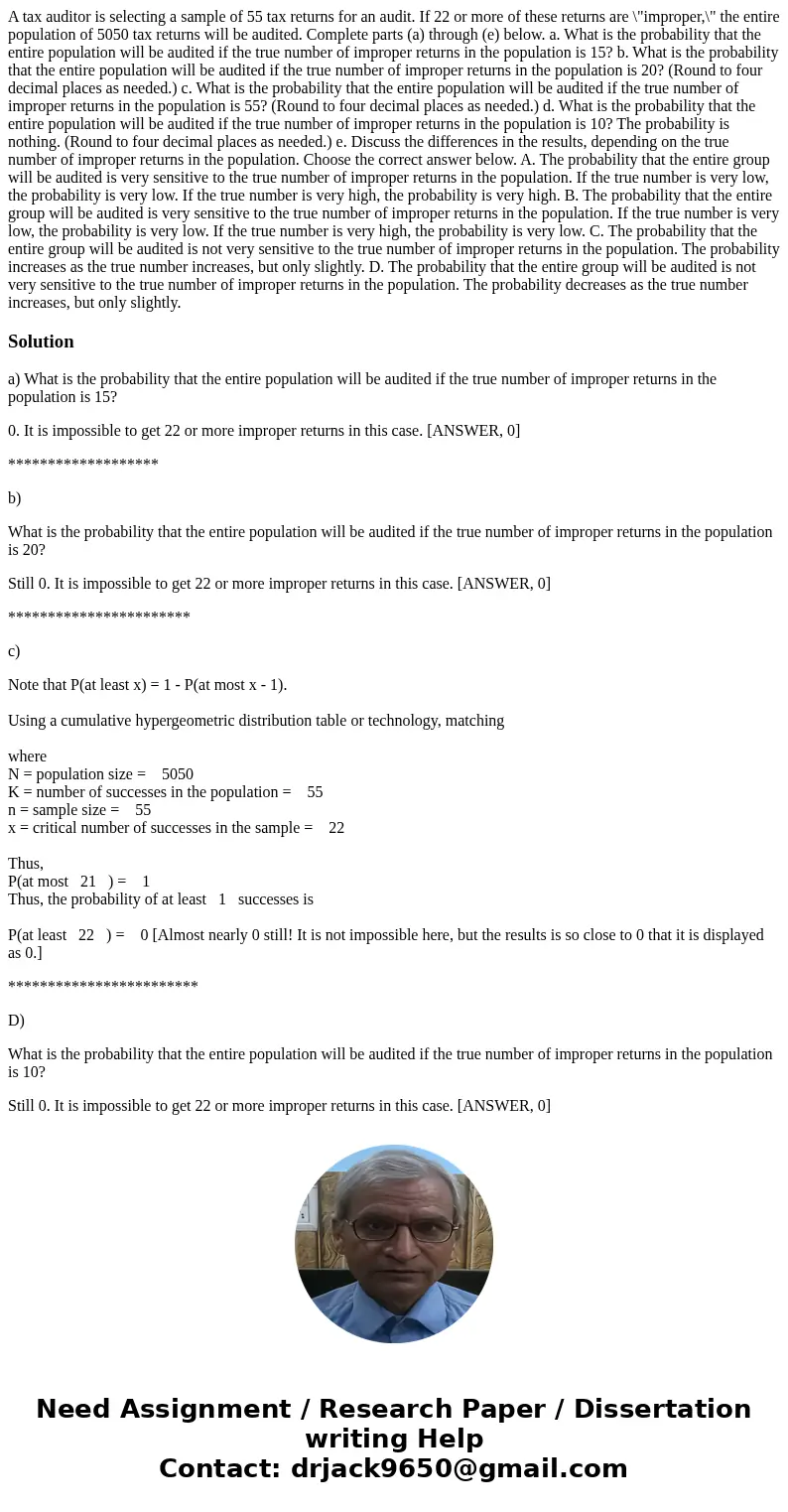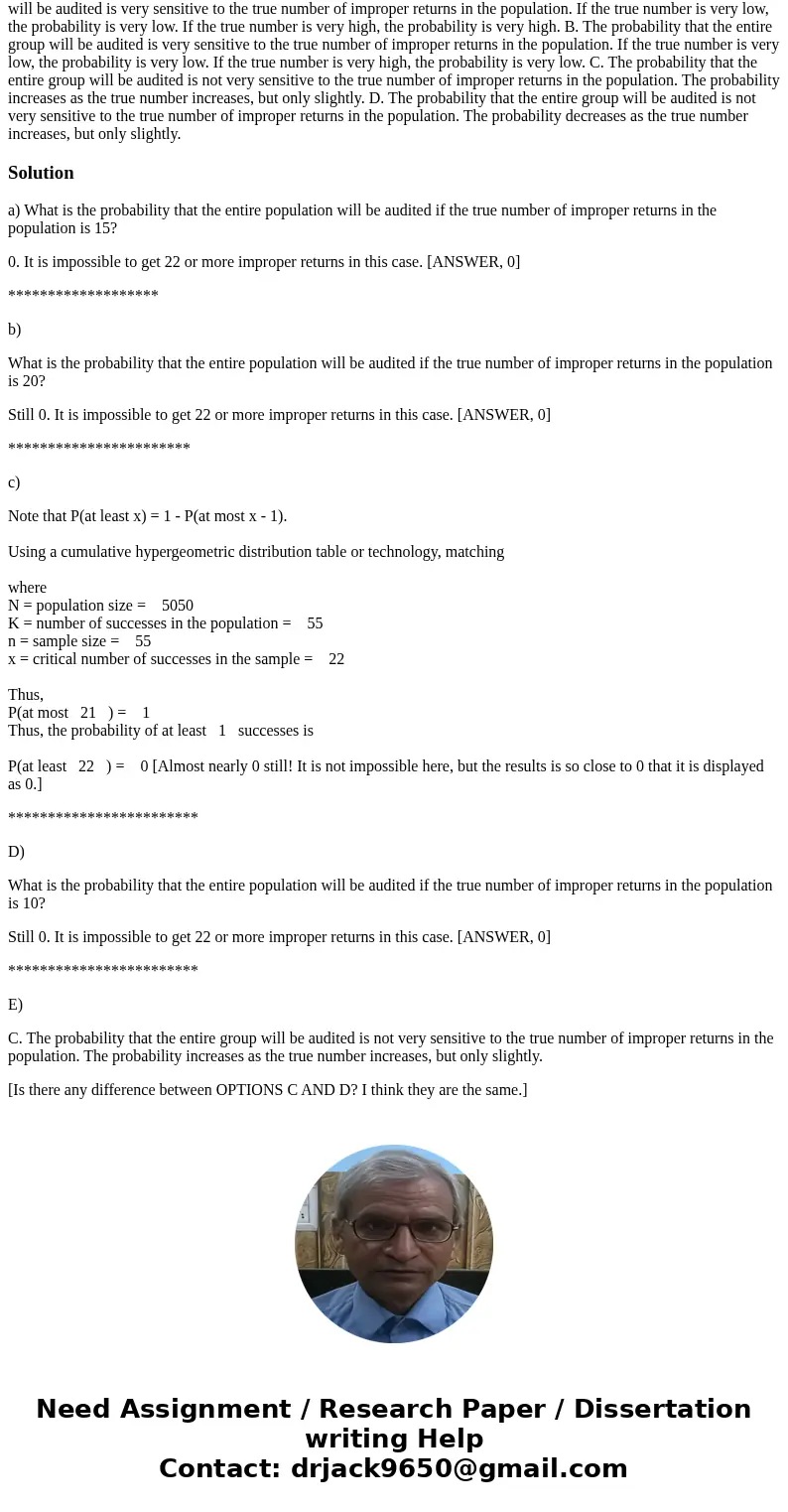A tax auditor is selecting a sample of 55 tax returns for an
A tax auditor is selecting a sample of 55 tax returns for an audit. If 22 or more of these returns are \"improper,\" the entire population of 5050 tax returns will be audited. Complete parts (a) through (e) below. a. What is the probability that the entire population will be audited if the true number of improper returns in the population is 15? b. What is the probability that the entire population will be audited if the true number of improper returns in the population is 20? (Round to four decimal places as needed.) c. What is the probability that the entire population will be audited if the true number of improper returns in the population is 55? (Round to four decimal places as needed.) d. What is the probability that the entire population will be audited if the true number of improper returns in the population is 10? The probability is nothing. (Round to four decimal places as needed.) e. Discuss the differences in the results, depending on the true number of improper returns in the population. Choose the correct answer below. A. The probability that the entire group will be audited is very sensitive to the true number of improper returns in the population. If the true number is very low, the probability is very low. If the true number is very high, the probability is very high. B. The probability that the entire group will be audited is very sensitive to the true number of improper returns in the population. If the true number is very low, the probability is very low. If the true number is very high, the probability is very low. C. The probability that the entire group will be audited is not very sensitive to the true number of improper returns in the population. The probability increases as the true number increases, but only slightly. D. The probability that the entire group will be audited is not very sensitive to the true number of improper returns in the population. The probability decreases as the true number increases, but only slightly.
Solution
a) What is the probability that the entire population will be audited if the true number of improper returns in the population is 15?
0. It is impossible to get 22 or more improper returns in this case. [ANSWER, 0]
*******************
b)
What is the probability that the entire population will be audited if the true number of improper returns in the population is 20?
Still 0. It is impossible to get 22 or more improper returns in this case. [ANSWER, 0]
***********************
c)
Note that P(at least x) = 1 - P(at most x - 1).
Using a cumulative hypergeometric distribution table or technology, matching
where
N = population size = 5050
K = number of successes in the population = 55
n = sample size = 55
x = critical number of successes in the sample = 22
Thus,
P(at most 21 ) = 1
Thus, the probability of at least 1 successes is
P(at least 22 ) = 0 [Almost nearly 0 still! It is not impossible here, but the results is so close to 0 that it is displayed as 0.]
************************
D)
What is the probability that the entire population will be audited if the true number of improper returns in the population is 10?
Still 0. It is impossible to get 22 or more improper returns in this case. [ANSWER, 0]
************************
E)
C. The probability that the entire group will be audited is not very sensitive to the true number of improper returns in the population. The probability increases as the true number increases, but only slightly.
[Is there any difference between OPTIONS C AND D? I think they are the same.]


 Homework Sourse
Homework Sourse